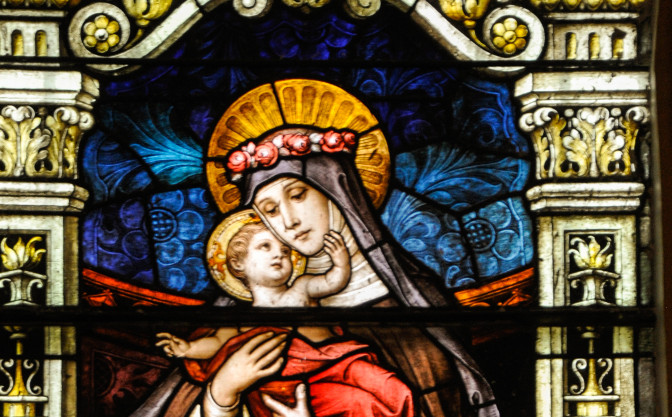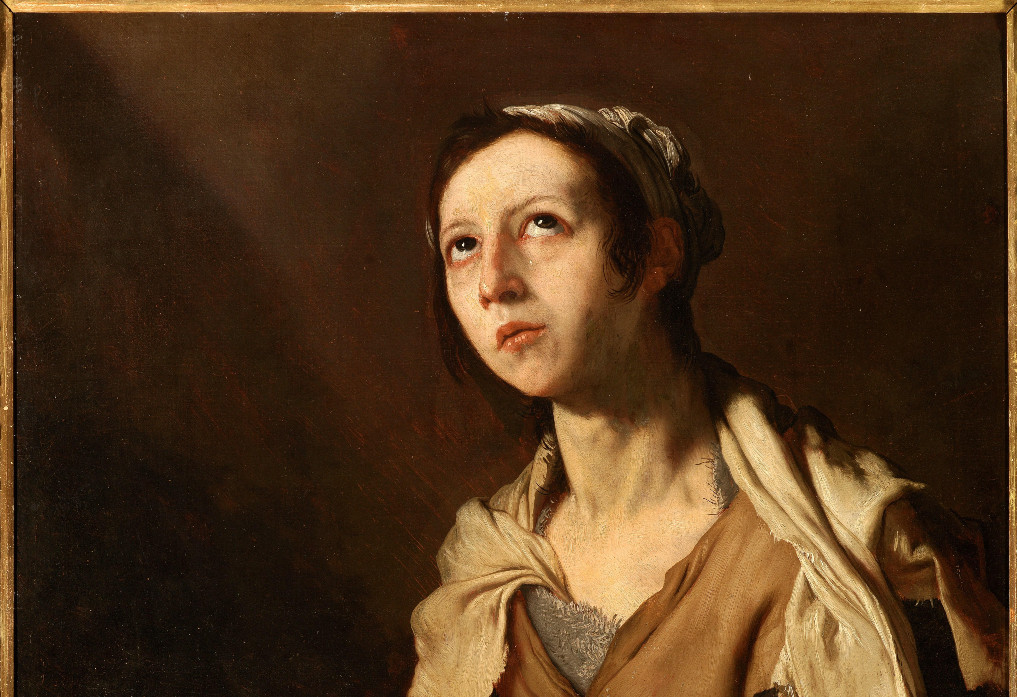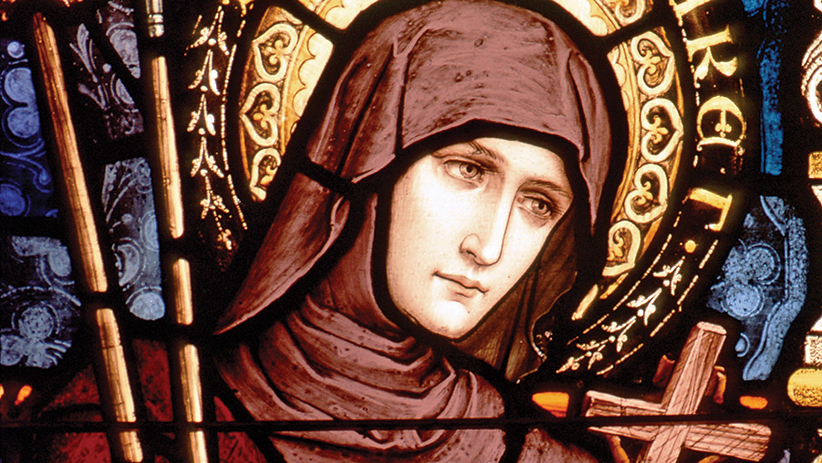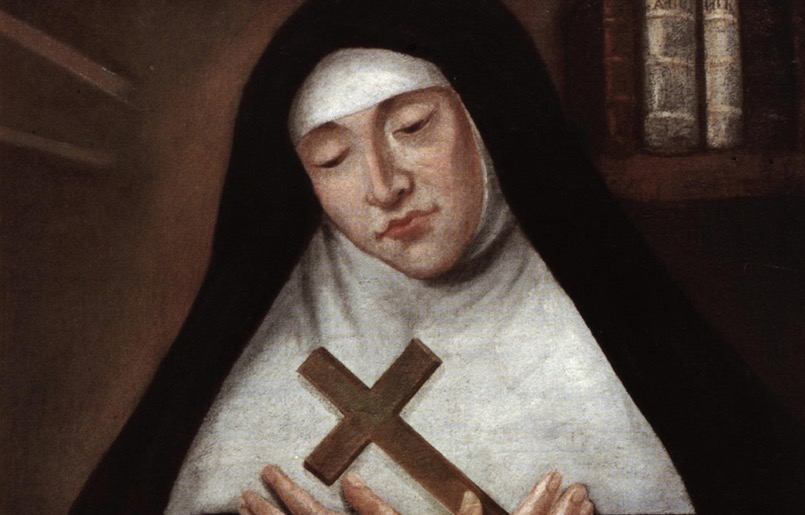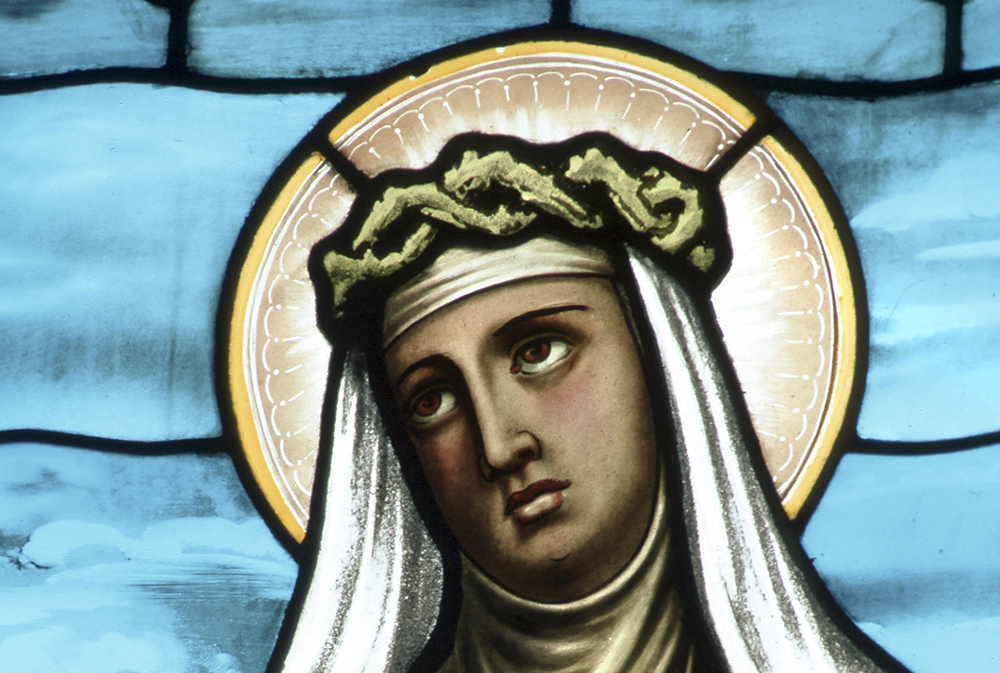1586-1617
Feast day: Aug. 23
The Peruvian St. Rose of Lima lived a simple, austere and penitential life of consecration to God, marked by mysticism, prayer and service to the poor. Although only 31 years old at the time of her death, she left a mark with her reputation of holiness that quickly had spread far and wide. St. Rose was beatified and canonized just over 50 years after her death in 1617.
Peru’s capital, established in 1535, was still very much the “New World” at the time Isabel Flores de Olivia was born in 1586, the daughter of a Spanish cavalryman and an indigenous Peruvian woman.
The name “Rose” was earned — a name by which she would be known the rest of her life — when, as a young child, it was purported that her face transformed into a version of the beautiful flower. Her rosy cheeks and comeliness stayed with St. Rose into adulthood, when she garnered a reputation for her physical attractiveness. St. Rose had decided from an early age that she wanted to dedicate herself to Christ through a life of virginity, and so she became troubled when young suitors admired her beauty. Despite the efforts of her family and friends, she turned down many men and their proposals for a life together. She even took extreme steps to ensure that she was no longer desirable to them — even rubbing pepper into her cheeks to scar them and chopping off her hair.
St. Rose was ready to give her life in defense of the Eucharistic Lord by taking it upon herself to protect the tabernacle in the church where she regularly worshiped.
After she felt the call to become a nun, St. Rose’s family tried to distract her. Although her father forbade her from entering the convent, he eventually acquiesced to a degree and afforded her a room to herself in the family home to pursue the life to which she was called. There she practiced her simple and austere life of mystical union with Christ through prayer, penance and a growing apostolate to the poor and sick of Lima. St. Rose sustained herself and her efforts by embroidering clothing and vestments. She is thus patroness of embroiderers.
Later, an encounter St. Rose had with a statue of the Blessed Virgin left her convinced that convent life was not her calling. She adopted life as a Dominican tertiary, taking the Dominican habit while remaining in her family home. During this time, her life of prayer and penance became even more fervent and observant. Strict fasting was only broken to receive holy Communion.

Once, when the invasion of Lima by Dutch Calvinists threatened the safety of Catholic institutions, St. Rose was ready to give her life in defense of the Eucharistic Lord by taking it upon herself to protect the tabernacle in the church where she regularly worshiped.
Desiring to give her all to Christ, like him, St. Rose willingly desired to empty herself of all earthly comforts. She chose to sleep only two hours a night — on the floor — to afford herself more time for prayer. St. Rose imposed upon herself a weighty silver crown with tiny spikes inside, which she wore in imitation of the crown of thorns worn by Christ at his passion. As with many other saints, St. Rose saw her supernatural reception of the stigmata as a gift, that the wounds and pain of the suffering Christ drew her closer to him with whom she desired mystical espousal. Such was her aim to the end, as the purported last words of St. Rose attest: “Jesus, Jesus, Jesus, be with me always.”
St. Rose died, as she predicted, on the feast of St. Bartholomew in 1617. Her funeral was a major event, drawing a wide cross-section of Lima’s citizenry — from the Spanish viceroy and the city’s archbishop to those on the peripheries like the poor whom she served.
Her widespread acclaim was one of the contributing factors that culminated in her canonization in 1671. The speed with which she was canonized is remarkable, especially in an age when few women were canonized.
Michael R. Heinlein is editor of OSV’s Simply Catholic. He writes from Indiana. Taken from the “Inspired by the Eucharist” saint booklet.

